AWS Certified AI Practitioner
Applications of Foundation Models
Retrieval Augmented Generation RAG and its uses
Welcome students, this is Michael Forrester. In this lesson, we explore Retrieval-Augmented Generation (RAG), a cutting-edge method that combines large language model generation with information retrieval. By retrieving relevant information during the prompt process, RAG enriches the model's input, leading to more accurate and context-aware AI-generated responses.
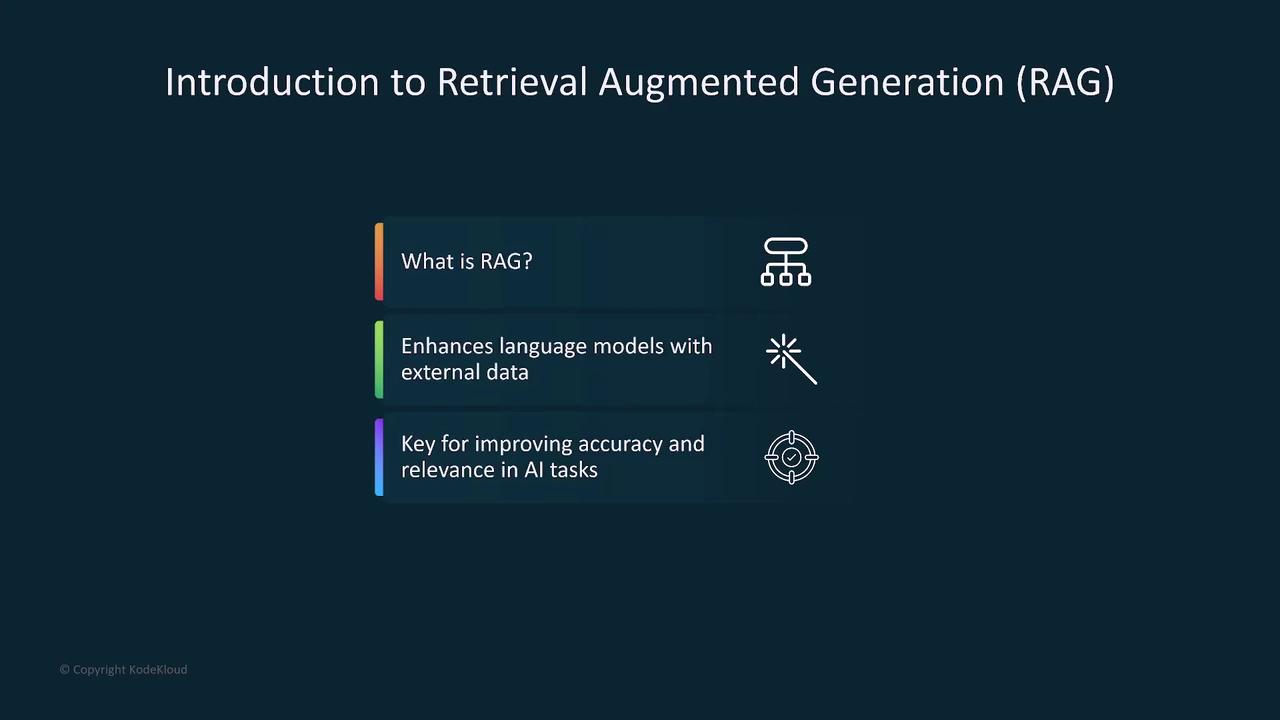
RAG is valuable because it supplements models trained with data only up to a certain cutoff with real-time, updated information. This approach ensures that language models produce trustworthy, up-to-date responses through dynamic external knowledge incorporation.
How RAG Works
At its core, RAG integrates a large language model with an information retrieval system. The process retrieves external knowledge, merges it with the user prompt, and processes the combined input to generate a highly relevant response.
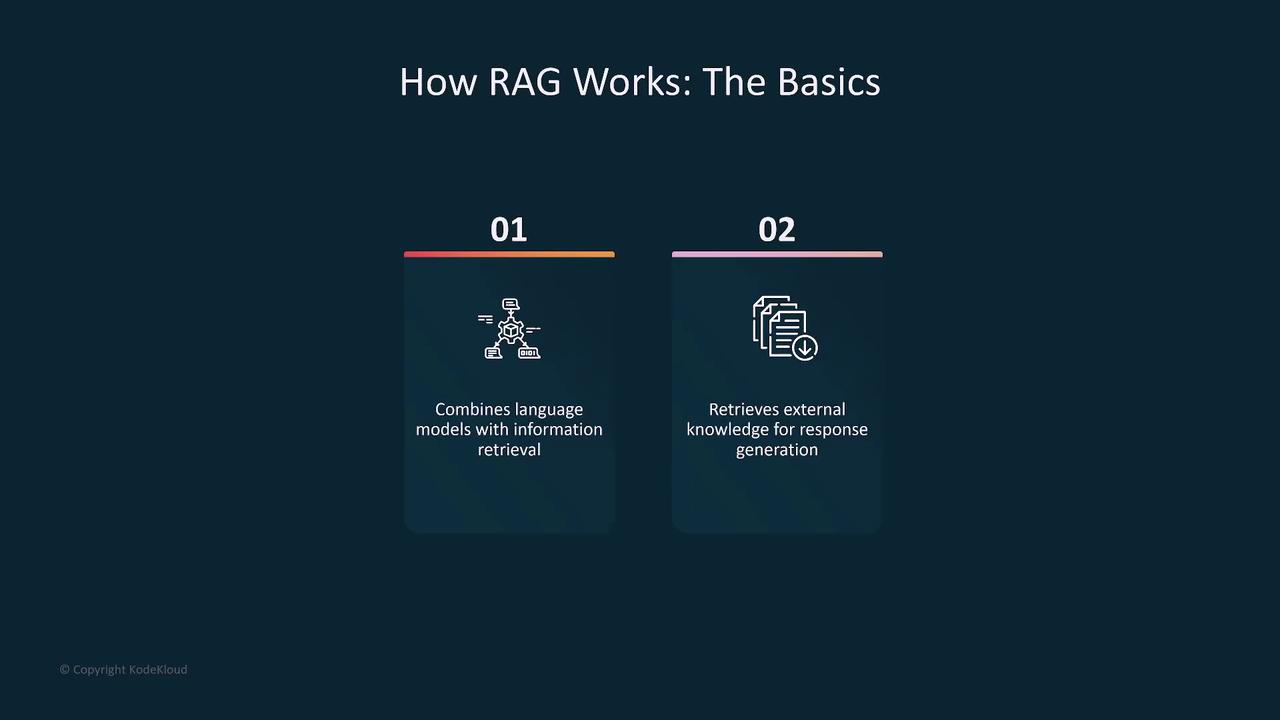
Understanding Prompts
A prompt is the user's input that dictates the request. It can incorporate various contextual data sources such as documents, web pages, blogs, and technical documentation. By integrating semantically meaningful context, RAG steers the model towards generating more precise responses—especially useful when the base training data is outdated.

For example, when dealing with frequently updated services like AWS or Azure, supplementing the prompt with current information helps maintain the accuracy and relevance of the output.
The Backbone of RAG: Vector Databases
A key component of RAG is the vector database, which stores data as vector embeddings. These embeddings—numerical representations capturing the meaning and relationships of data—enable rapid and efficient retrieval of contextually relevant information.
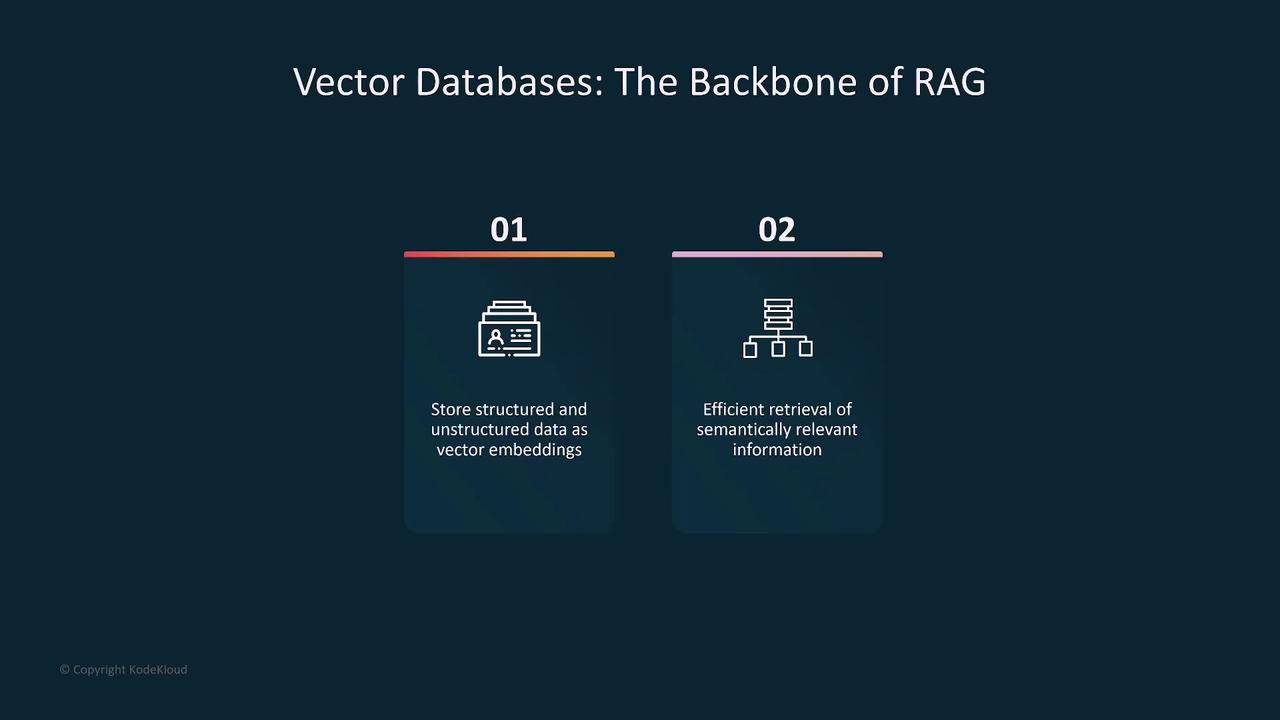
Machine learning models are vital in converting raw text, images, or videos into these numerical embeddings, thus optimizing the overall retrieval process.
Business Applications
RAG significantly enhances various business applications. It improves search recommendations and text generation by embedding richer contextual data into the model's responses. Additionally, RAG supports improved customer interaction, enhanced feedback loops, and accurate document extraction.
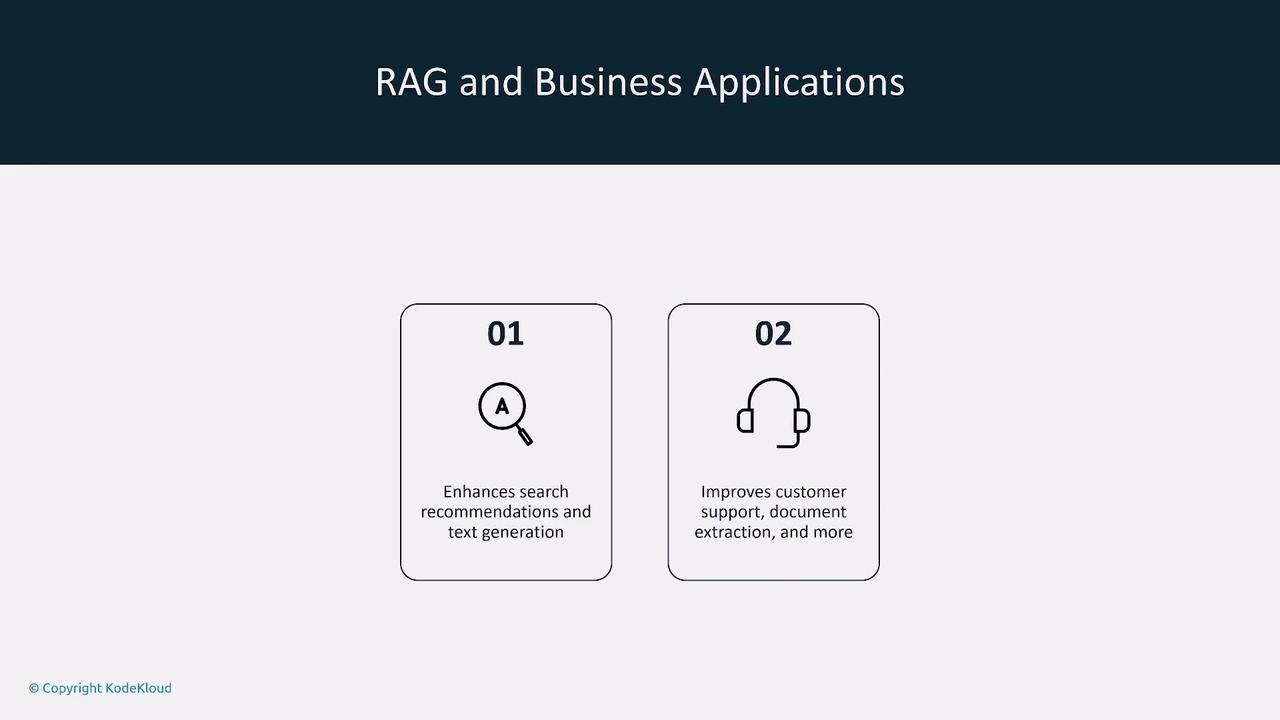
For instance, Amazon Bedrock utilizes RAG to connect with embedded vector databases, thus retrieving data from comprehensive knowledge bases. This integration ensures that responses are both precise and current.
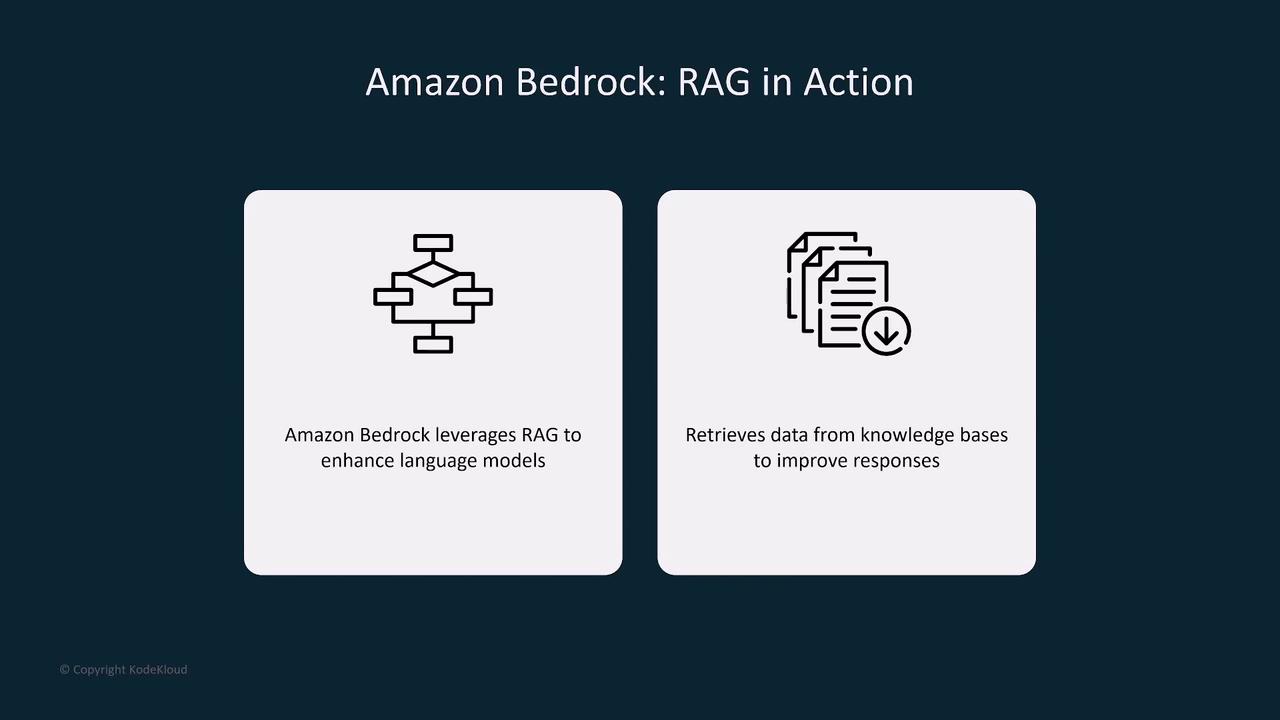
Other AWS services such as RDS, Amazon Aurora, and Neptune Graph ML further support vector embeddings and advanced vector search capabilities, broadening the use cases of RAG.
Cost Considerations
When implementing RAG, balancing performance and cost is crucial. RAG can be integrated at various stages:
- Pre-prompt incorporation during training
- Mid-prompt application
- Post-response feedback loop adjustments
Each approach demands robust infrastructure capable of performing rapid data search and retrieval. However, reliance on external data may introduce challenges such as managing data filtering, reducing noise, addressing biases, or handling sensitive information.
Note
Carefully evaluate trade-offs between performance improvements and increased infrastructure costs when integrating RAG into your systems.
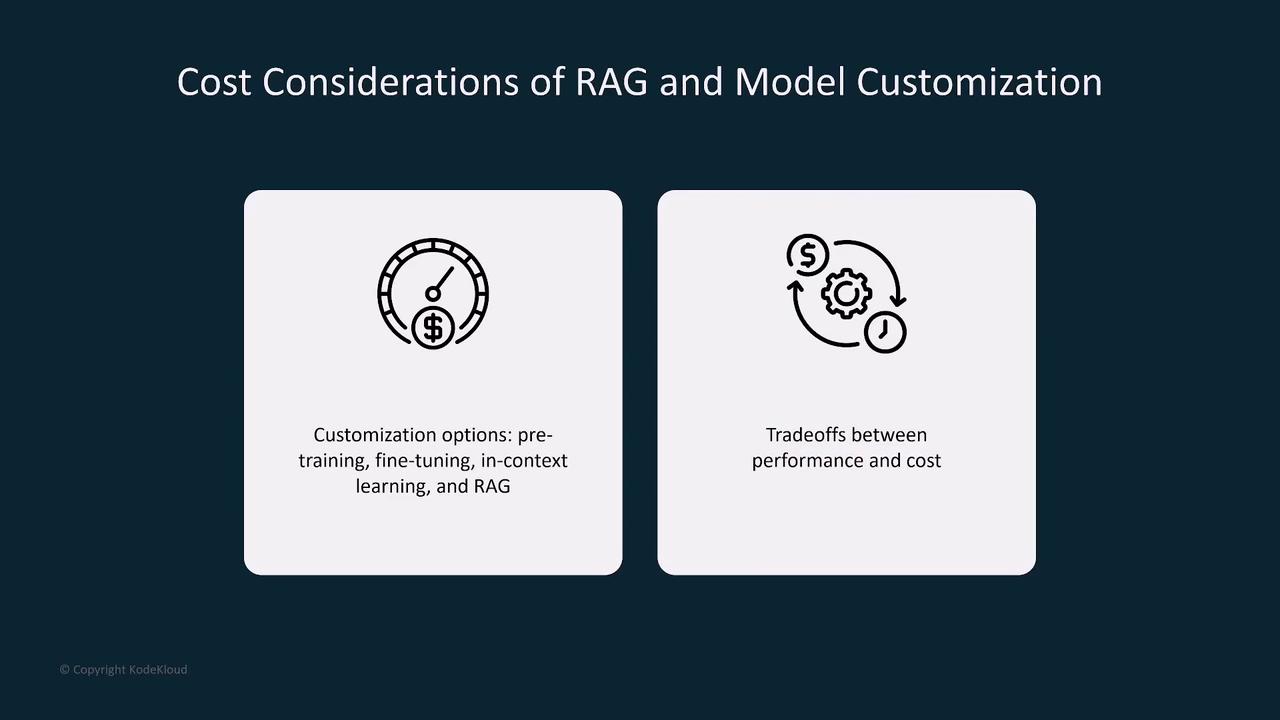
Enhancing In-Context Learning
RAG boosts in-context learning techniques—spanning multi-shot, few-shot, and zero-shot approaches—by embedding external examples into prompts. This enhancement is particularly effective in applications such as customer support, where previous interactions and specialized domain knowledge drive more comprehensive responses. Academic research and public information retrieval also benefit significantly from RAG's enriched data sourcing.
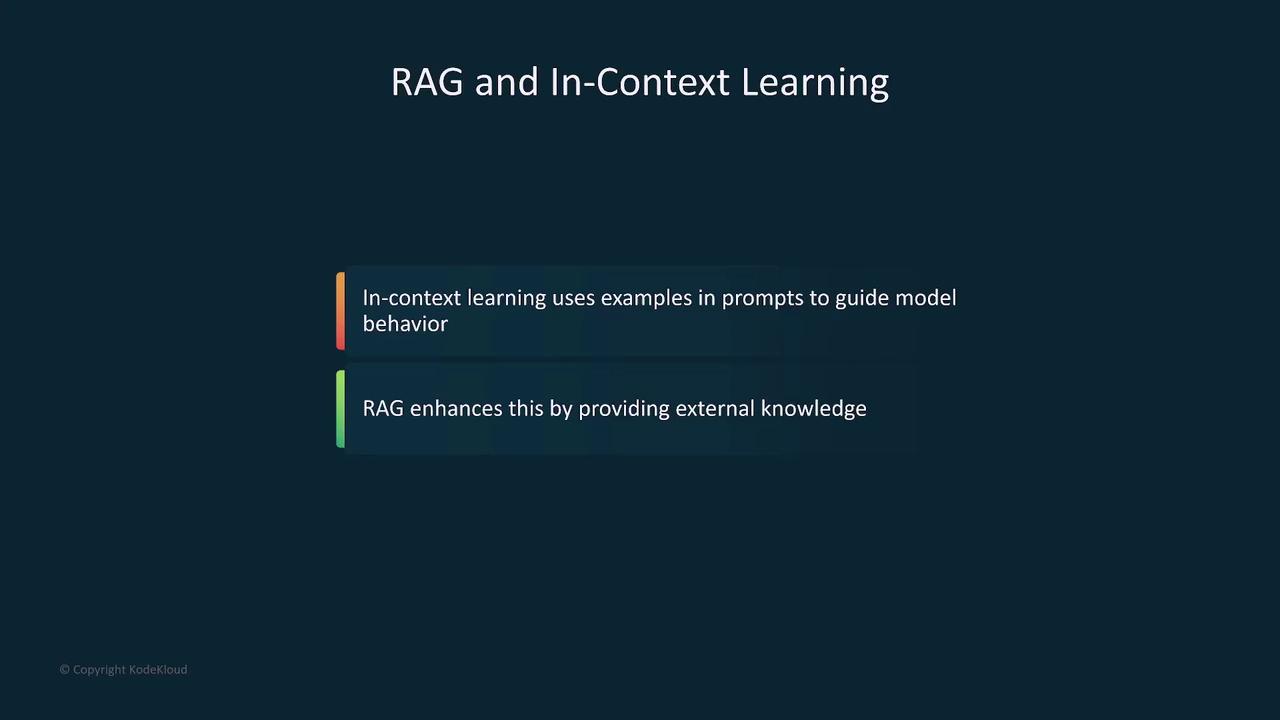
Moreover, RAG is ideal for knowledge management systems. It streamlines access to dynamic, frequently updated information in large organizations while surpassing traditional search engine capabilities in terms of precision and speed.
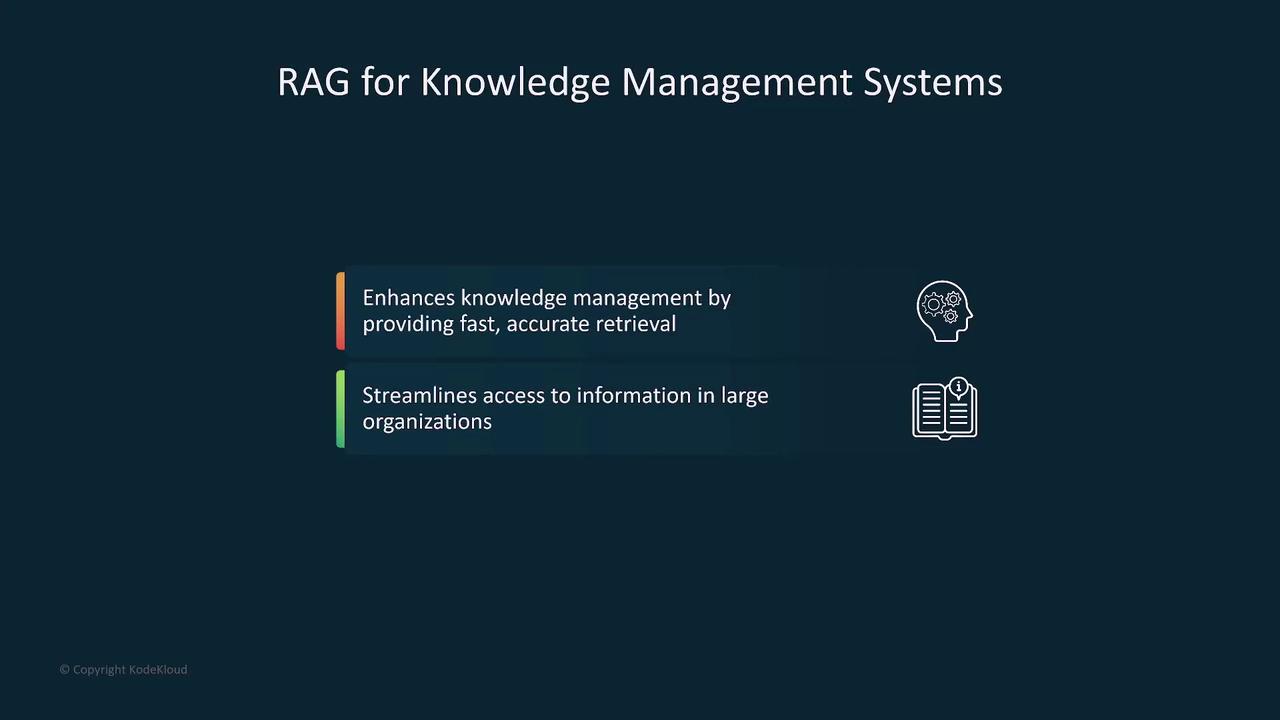
Challenges and Final Thoughts
While RAG offers numerous benefits, it also presents challenges related to infrastructure demands, retrieval speed, and data filtering. Ensuring the security of external sources, preventing model poisoning, and mitigating bias are essential considerations during implementation.
Warning
When deploying RAG solutions in production, be mindful of potential security vulnerabilities and data integrity issues. Ensure thorough testing and validation of all external data sources.
Despite these challenges, RAG remains an exceptional tool for advancing AI capabilities, especially in specialized domains where up-to-date and accurate information is critical.
In our next lesson, we will delve deeper into vector databases and explore how they further empower the capabilities of Retrieval-Augmented Generation.
Happy learning, and see you in the next lesson!
Watch Video
Watch video content